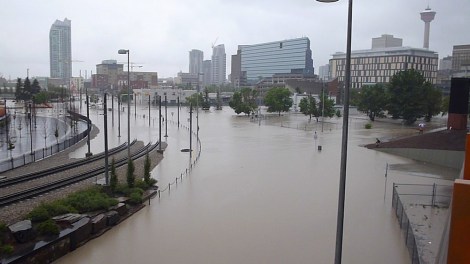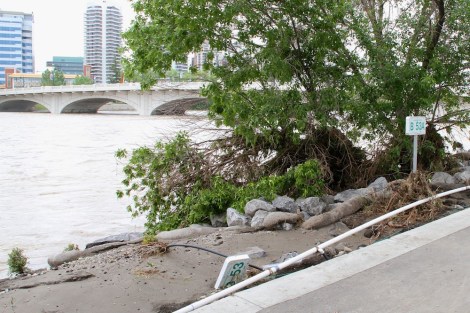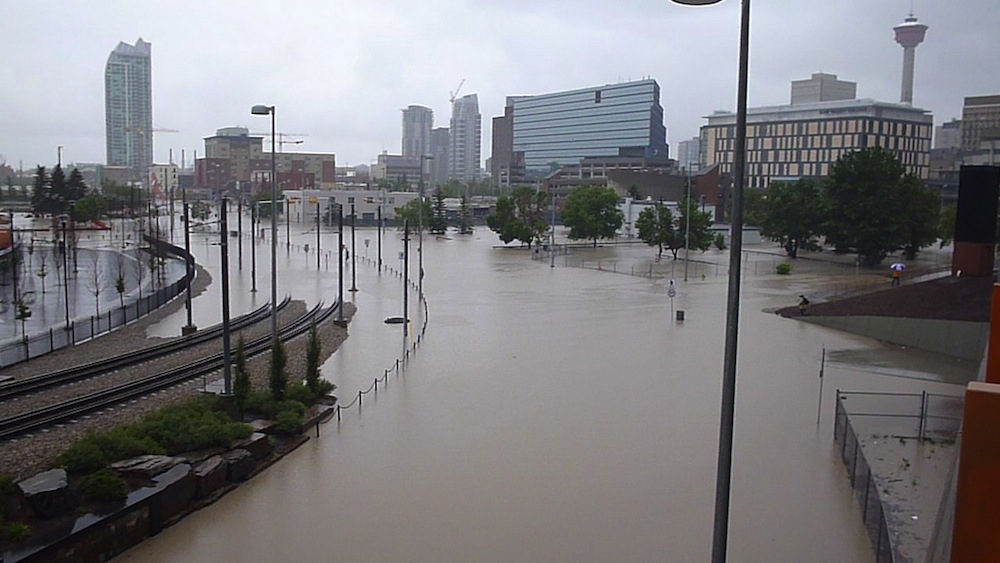Epic floods forced more than 100,000 people to flee their homes last week in Calgary, Alberta, the tar-sands mining capital of Canada. More than seven inches of rain fell on the city over the course of 60 hours.
Now the floodwaters are subsiding throughout the province, leaving in their wake an oil spill, power outages, and questions about how climate change might affect flooding.

Keltek TrustSoggy Calgary
Alberta Premier Alison Redford said the crisis was “like nothing that we’ve ever seen before,” the Calgary Herald reported Monday. “We will live with this forever.”
The heavy rains also appear to have shifted the earth beneath a pipeline near the city of Fort McMurray, triggering a leak of synthetic crude oil. On Monday, energy company Enbridge said a cleanup operation was underway in a wetlands area; initial estimates placed the size of the spill at 500 to 750 barrels. From Reuters:
The spill, which may have been caused by heavy flooding that has paralyzed the Alberta city of Calgary, headquarters of Canada’s oil and gas industry, forced Enbridge to shut two much larger lines as a precaution, threatening a serious disruption in the flow of oil sands crude.
So what role might climate change have played in flooding this hotspot of climate-changing oil extraction? From the Vancouver Observer:
[Environment Canada climate scientist David] Phillips said this storm was very unusual for Calgary, where systems tend to move on quickly:
“The storm just kind of stayed put,” Phillips said. … “[The storm] stood around like an unwanted houseguest and wouldn’t leave …”
“That kind of rainy weather may become frequent in the years to come as the earth’s climate warms up.”
A study published in the journal Nature Climate Change on June 9 found that flood frequency as well as the number of people at risk of inundation from flood events are both likely to increase as the world continues to warm.
The researchers didn’t study North America, but in a statement to Climate Central they said, “if the warming unfortunately proceeds, the flood risk on a global scale becomes larger.”

Ricky LeongCalgary’s Bow River is running very high.




